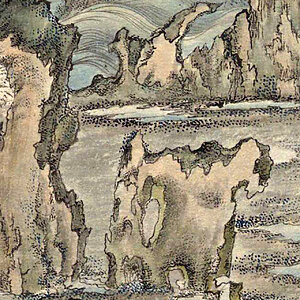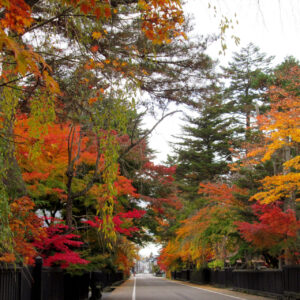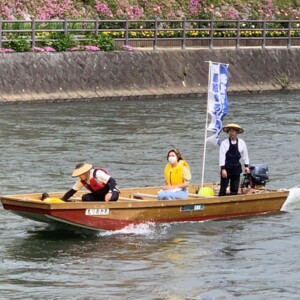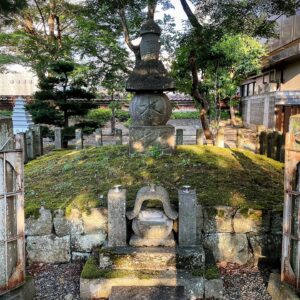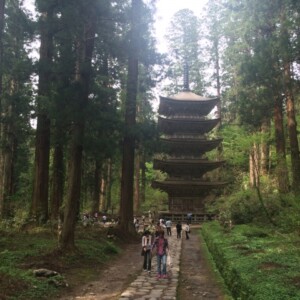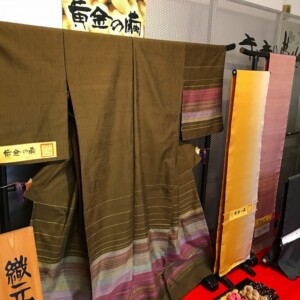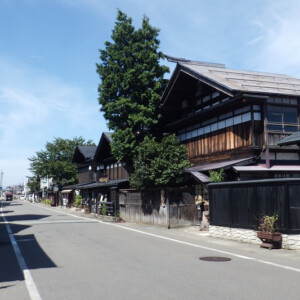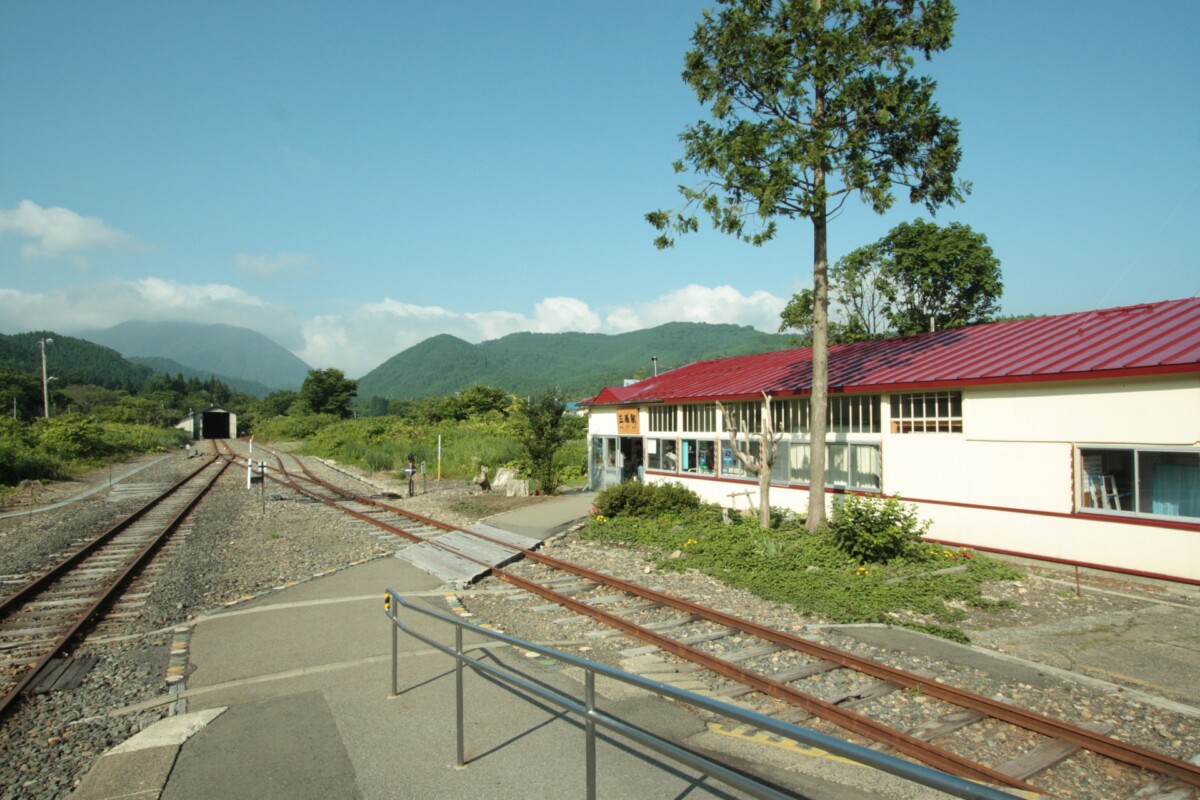
Two years have passed since the heavy rains in August 2022... what will happen to the Tsugaru Line? [Aomori Prefecture]
table of contents
the Tsugaru Line runs
through the eastern part of the Tsugaru Peninsula in Aomori Prefecture Originally, the line could only be called a local line, but with the opening of the Seikan Tunnel in 1988, the became part of
an important route connecting Aomori Prefecture and Hokkaido. . However, the northern half was left as a local line it was decided that it would be abolished without being repaired .
What will the future hold for the areas along the Tsugaru Line?
What is the Tsugaru Line?
The Tsugaru Line runs from Aomori Station, the central station in Aomori City, Aomori Prefecture, through Yomogita Village, Higashitsugaru District , Sotogahama Town , and Imabetsu Town This is a JR East railway line that connects Minmaya Station
in Sotogahama Town It runs through the eastern part of the Tsugaru Peninsula.
The total length of the line is 55.8 km and the number of stations is 18.
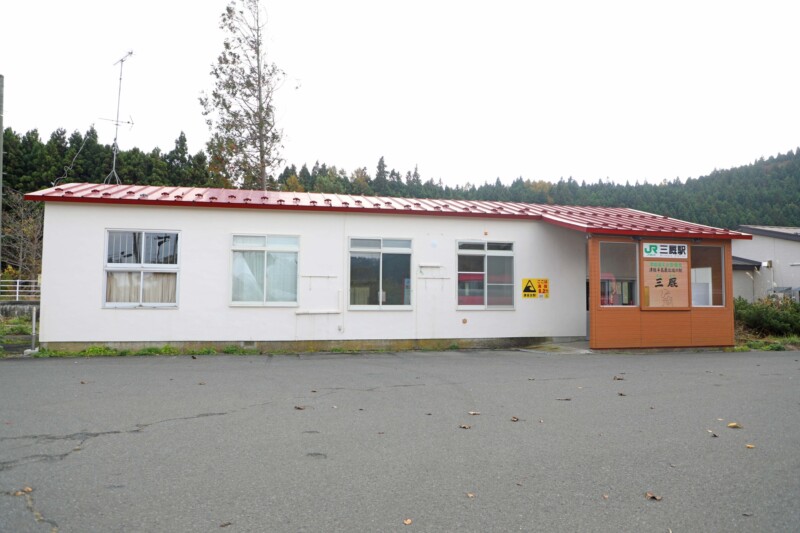
The new Nakaoguni signal station is located between Nakaoguni Station and Ohira Station
in Sotogahama Town At this signal station, the Tsugaru Line branches off from the Kaikyo Line.
The Kaikyo Line is a line that passes through the Seikan Tunnel in the Tsugaru Strait and extends towards Hokkaido.
The number of trains operating varies from Kanita Station in Sotogahama Town, which is located 27 km from Aomori Station.
Local trains run nine round trips a day between Aomori Station and Kanita Station.
Regarding vehicles, electric trains are mainly used.
In the past, there were also many limited express trains running to Hokkaido.
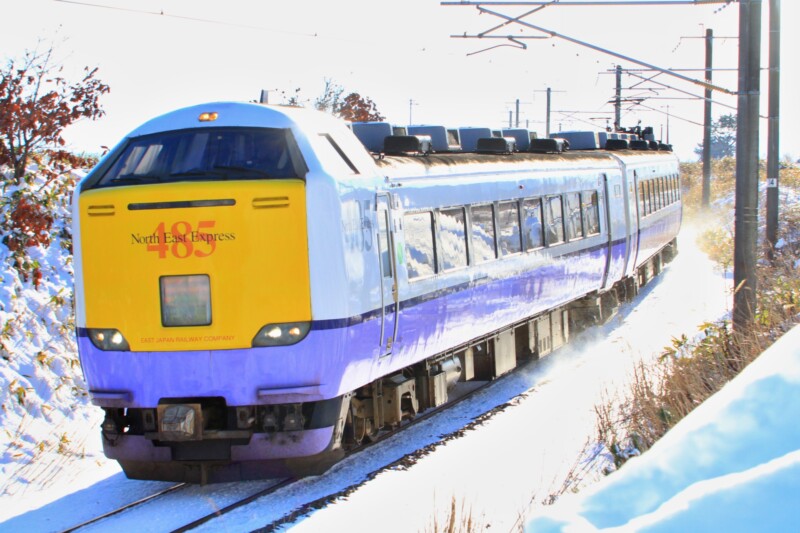
On the other hand, only local trains operated five round trips a day between Kanita Station and Mimaya Station.
The vehicles used were diesel cars that ran on diesel fuel.
The two sentences above are in the past tense because passenger trains in this section are currently suspended
In addition, more than 20 freight trains a day run between Aomori Station and Shin-Nakaoguni Signal Station, traveling between Hokkaido and Honshu via the Kaikyo Line.
This freight train, for example, transports agricultural products from Hokkaido to Honshu.
It is no exaggeration to say that the Tsugaru Line's greatest role today is to serve as a route for freight trains.
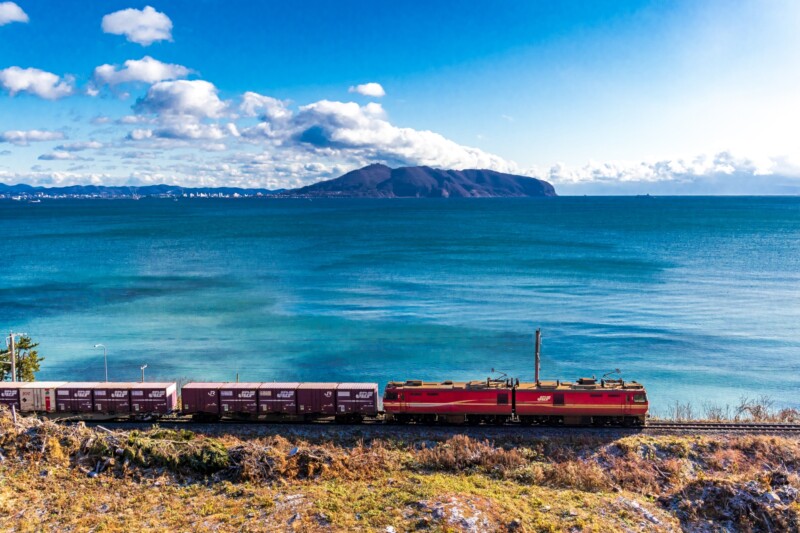
Opening of the Tsugaru Line
the Revised Railway Construction Act of 1922 , which stated that the railway scheduled to be built on the Tsugaru Peninsula would run from Aomori, Aomori Prefecture, via Mimaya and Kodomari (the northern tip of the Tsugaru Peninsula). Railway to Goshogawara ."
A railway was planned to connect the Tsugaru Peninsula in an inverted U-shape, and the southwest part of this plan was designated as the private railway Tsugaru Railway Line between Tsugaru Goshogawara Station and Tsugaru Nakazato Station. It opened in 1930.

However, the opening of the Tsugaru Line on the southeast side was postponed after the Pacific War.
In 1951, the line between Aomori Station and Kanita Station was opened as a line of the Japanese National Railways, the predecessor of JR, and seven years later, in 1958, the line between Kanita Station and Mimaya (apparently it was called ``Miumaya'' at the time) opened. I did.
Furthermore, the railway from Mimaya Station to Tsugaru Nakazato Station via Kodomari was never realized.
When the Tsugaru Line opened, the Seikan Tunnel did not yet exist, so the entire Tsugaru Line was a local line that simply connected the eastern part of the Tsugaru Peninsula.
Even so, since then there has been a difference in the number of trains running around Kanita Station.
For example, in the October 1964 timetable, there were 10 round trips a day between Aomori Station and Kanita Station, but 6 round trips a day between Kanita Station and Mimaya Station.
Seikan tunnel opening
In 1987, Japan National Railways was split up and privatized, and the Tsugaru Line was inherited by JR East.
The following year, in 1988, the Seikan Tunnel opened, and the new Chukokuni Signal Station was built on the Tsugaru Line between Kanita Station and Mimaya Station, and here the Kaikyo Line and Tsugaru Line, which includes the Seikan Tunnel section, were operated. Connected.
As a result of this, the southern and northern sides of the Tsugaru Line became completely different lines.
Trains passing through the Seikan Tunnel must run on electricity (because there is a risk of fire in the tunnel if diesel cars are used), so the Tsugaru Line's section between Aomori Station and Shin-Nakaoguni Signal Station will also be electrified, allowing trains and trains to run through the Seikan Tunnel. Electric locomotives can now run.
Of course, the limited express trains and freight trains that connect Honshu and Hokkaido run on electricity, but the local trains that run between Aomori Station and Kanita Station are also becoming electric.
A variety of trains, including limited express trains, local trains, and freight trains, will frequently come and go between Aomori Station and Kanita Station/Shinchuoguni Signal Station.
On the other hand, the section between Kanita Station and Mimaya Station is not included in the route connecting Aomori Prefecture and Hokkaido (excluding the section between Kanita Station and Shin-Nakaoguni Signal Station), so this section will continue to be considered a local line. .
In 2016, with the opening of the Hokkaido Shinkansen between Shin-Aomori Station and Shin-Hakodate-Hokuto Station, passenger trains passing through the Seikan Tunnel were switched from conventional limited express trains to Shinkansen trains.
The conventional limited express train that connected Honshu and Hokkaido, which ran between Aomori Station and Shin-Nakaoguni Signal Station on the Tsugaru Line, has been discontinued, so the only passenger trains available are local trains.
However, the Tsugaru Line continues to play an important role as a route for freight trains.
Heavy rain in August 2022
In contrast to the southern section of the Tsugaru Line, which plays an important role in freight transportation, the northern section suffers from bad luck.
Due to damage to Tsugaru Line equipment caused by heavy rains that hit the Tohoku region in August 2022 passenger trains between Kanita Station and Mimaya Station were suspended for an extended period of time.
If a disaster were to occur, we would like to recover and resume train service, but the problem here was that there were very few users of the Tsugaru Line.
The average number of people passing by between Kanita Station and Mimaya Station (the number of train users per 1km per day) was only
107 The usage situation was such that even buses, let alone trains, were not profitable, and the annual deficit for this section amounted to 700 million yen.
In addition, the Tsugaru Line north of the Shin-Nakaoguni signal station is a dead-end line (cecal line) that is not connected to other lines, and no freight trains are operated.
Therefore, the role it plays in the railway network is not large.
JR East, which operates the Tsugaru Line, is reluctant to restore such a line at great expense and operate it while sustaining future losses.
Therefore, JR East and local governments along the Tsugaru Line have decided to hold discussions regarding the future of the affected section, with a view to abolishing the line.
As for the future direction of the disaster-stricken section, proposals were made such as restoring it but retaining the railways and other facilities in the hands of the local government, or converting to automobile transportation.
Furthermore, among the municipalities along the line, there were some municipalities that were not particular about restoring the Tsugaru Line as a railway, and others that insisted on its restoration.
However, if the railway is to remain in any form, someone will have to continue to shoulder the annual deficit of hundreds of millions of yen for the 100 or so people who use it each day.
It is clear that the benefits of keeping the railways in place are not commensurate with the cost burden, and it can be said that the burden cannot continue to be incurred indefinitely.
In the end, the abolition of the affected sections was approved, and the possibility of switching to buses and taxis was discussed .
Passenger train service between Kanita Station and Mimaya Station has already been suspended for two years, but the line will be abandoned without any trains running (except for the section where freight trains run).
Please note that the specific date of discontinuation has not been announced at this time.
Alternative transportation after the disaster
In fact, the Tsugaru Line does not extend all the way to Tatsubisaki at the northern tip of the Tsugaru Peninsula, and facilities such as supermarkets, government offices, and hospitals are located far from the station, and there are few trains, especially north of Kanita Station. For this reason, it was originally a difficult route to use for both daily life and sightseeing.
As a demonstration experiment, starting in July 2022, JR East has been operating a shared taxi called "Wantaku" on a parallel route between Kanita Station and Mimaya Station on the Tsugaru Line during daytime hours.
This WanTaku was only intended as an experiment, but one month after the experiment began, the Tsugaru Line was damaged, so it has continued to operate as an alternative means of transportation to the Tsugaru Line, and has become well established. I did it.
WanTaku has two types of services: "free service," where you can get on and off anywhere within the service area by making a reservation, and boarding times can be specified in 30-minute increments, and one that offers four round trips a day with fixed operating times like a train. Scheduled flights are in operation.
Regular trains also stop at Hotel Ryuhei and Ryuhizaki Lighthouse, which cannot be accessed by train, and passengers are free to get on and off as long as they are on the route, and even at facilities outside the route, such as Sotogahama Central Hospital and Seikan Tunnel Memorial Museum. You can reserve your pick-up and drop-off location in advance.
In addition to having a high degree of freedom in where you get on and off the WanTaku, the fare is convenient at just 500 yen per person per ride, making it popular with users who say it's more convenient than the train. .
In addition to WanTaku, a substitute bus for Tsugaru Line trains also operates four round trips a day on weekdays and three round trips a day on holidays.
Before the disaster, the number of trains was 5 round trips a day, so the combined number of substitute buses and scheduled WanTaku services is higher.
In this situation, residents and tourists alike can feel that alternative transportation is more convenient than the Tsugaru Line, so it is no wonder that municipalities along the line have accepted the abolition of the Tsugaru Line.
Furthermore, JR East is also proposing to cooperate, including financially, in the development of the Tsugaru Line's transportation network after the disaster.
This suggests that the decision to abolish the railway was not one in which the railway company unilaterally cut off local areas.
Spots along the Tsugaru Line
Following the introduction of the Tsugaru Line, here we will introduce spots near the Tsugaru Line.
If you wish to visit by public transportation, it is convenient to use the dog taxi introduced in this article.
Tsugaru Quasi-National Park Tatsuzuki Coast Takanosaki
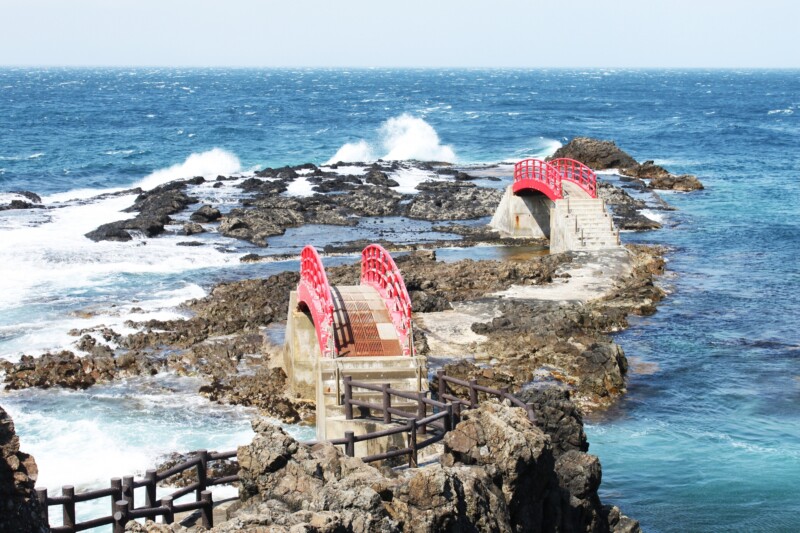
located in Tsugaru Quasi-National Park , is considered one of the most scenic spots on the Tsugaru Peninsula.
It is a place with a spectacular view that overlooks Hokkaido, Ryuhizaki, and the Shimokita Peninsula.
The two red bridges in this photo are called `` Shiosai Bridge '' and `` Nagisa Bridge .'' Crossing the bridges will take you to the rocky area at the tip, where you can admire the spectacular view to your heart's content while being blown by the sea breeze.
Since it is not a spot near the regular WanTAKU service route, you will need to make a reservation for the WANTAKU free service or use the bus from Okutsugaru Mabetsu Station on the Hokkaido Shinkansen to access it.
Tatsuzuki Coast Takanosaki<Information>
- Name: Tatsuzuki Coast Takanosaki
- Location: Otsuki, Imabetsu-cho, Higashitsugaru-gun, Aomori Prefecture
- Inquiry number: 0174-35-3005 (Imabetsu Town Hall Industrial Construction Division)
- URL Tsugaru Quasi-National Park Otsuki Coast Takanosaki | Spots/Experiences | [Official] Aomori Prefecture Tourist Information Site Amazing AOMORI
Google Map
Seikan Tunnel Memorial Museum
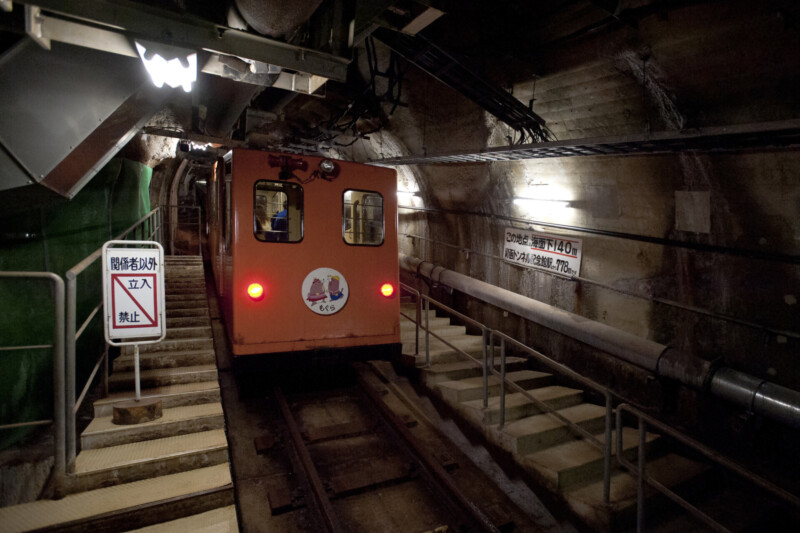
The Seikan Tunnel Memorial Museum is a memorial museum dedicated to the Seikan Tunnel (53.85 km in total length), which opened in 1988 and penetrates the ocean floor of the Tsugaru Strait.
The process of building the Seikan Tunnel from its conception to construction progress and completion is introduced using audio, video, and three-dimensional models.
If you take the Seikan Tunnel Tatsuhishako Line Mogura Cable Car, you will arrive 140 meters below sea level in 7 minutes.
Here, in a corner of the underground tunnel, the site from when the tunnel was excavated has been recreated.
It is a facility that conveys to the present a major project that should remain in the history of civil engineering not only in Japan but around the world.
The Seikan Tunnel Memorial Hall is not on the route of the scheduled OneTaku train, but you can get on and off the train if you make a reservation in advance.
Seikan Tunnel Memorial Museum<Information>
- Name: Seikan Tunnel Memorial Museum
- Address: 99 Mimaya Ryuhama, Sotogahama-cho, Higashitsugaru-gun, Aomori Prefecture
- Inquiry number 0174-38-2301
- Business hours 8:40-17:00
- Closed days: Closed during winter
- URL Seikan Tunnel Memorial Museum
Google Map
Stairs National Route 339

National Route 339 which passes through Tatsubisaki on the Tsugaru Peninsula , has a section that is the only national highway in Japan that has stairs.
Since it's a staircase, it's natural that even though it's a national highway, cars can't drive on it, and there are various theories as to why such a national highway was born.
Although it was a good idea to designate it as a national highway, it is said that the slope was too steep to make it into a sloping road, and that officials designated it as a national highway without inspecting the site in the first place.
Regardless of the circumstances, the uniqueness of the staircase, even though it is on a national highway, has become a tourist attraction and is gaining popularity as a tourist attraction in Tsugaru.
The path has 362 steps, a total length of 388.2m, and an elevation difference of about 70m, making it quite difficult to climb.
However, the view of the Tsugaru Strait from the national highway is very nice.
Access is just a short walk from Ryuhizaki Lighthouse, which is the last stop on the scheduled Wantaku service.
Stairs National Route 339<Information>
- Name Stairs National Route 339
- Location: Mimaya Ryuhama, Sotogahama-cho, Higashitsugaru-gun, Aomori Prefecture
- Inquiry number 0174-31-1228 (Sotogahama Town Industry and Tourism Division)
- Notes: Closed during winter
Google Map
Tsugaru Strait Winter Scenery Song Monument
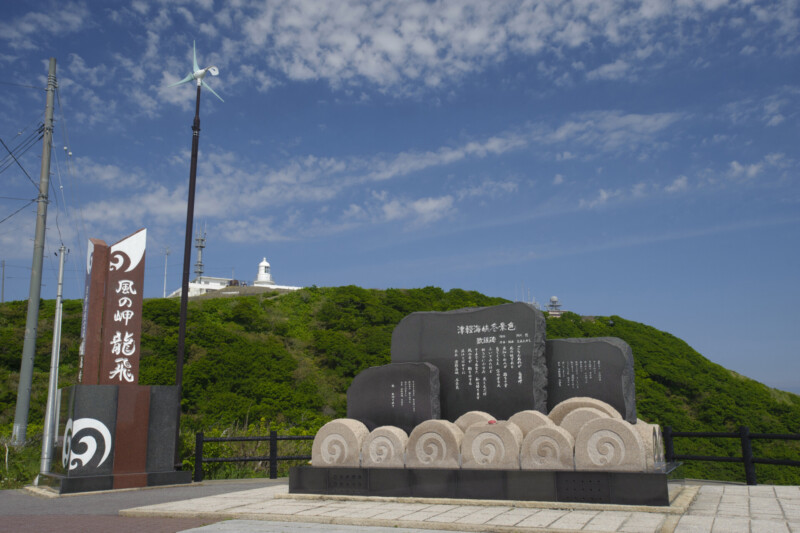
`Tsugaru Straits/Winter Scenery sung by Sayuri Ishikawa depicts a journey from Ueno to Aomori on a night train, then aboard the Seikan Ferry that was in operation at the time to Hokkaido. I think many of you know this.
A monument to this song has been installed at Ryuhizaki (a similar one is also installed in Aomori City).
When you press the button on the song monument, the second verse about Ryuhizaki will be played.
You will be able to feel deeply that you have reached the farthest reaches of Honshu.
It is located near the entrance on the upper side of the national highway, so it is most convenient to access it from the Ryuhizaki Lighthouse, which is the last stop on the scheduled WanTaku bus.
Tsugaru Strait Winter Scenery Song Monument<Information>
- Name Tsugaru Strait Winter Scenery Song Monument (Sotogahama Town)
- Location: Mimaya Ryuhama, Sotogahama-cho, Higashitsugaru-gun, Aomori Prefecture
- Inquiry number 0174-31-1228
Google Map
summary
The Tsugaru Line, which opened as a local line, has a contrasting history: the southern section was later given the role of connecting Honshu and Hokkaido, and the northern section remained as a local line, but it was decided to abolish it after a heavy rain disaster. I decided to walk.
It would be sad to see the railroad abolished, and I completely agree with that.
However, the important thing for the areas along the line is not to preserve the railway at all costs, but to create a situation where residents can continue to use public transportation .
The future of the efforts of JR East and local governments along the Tsugaru Line, which have taken steps toward maintaining sustainable public transportation, will likely become the focus of attention in other regions around the country that are also facing the problem of local lines in the red. Probably.


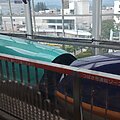


![The disappearing super local line "Nicchu Line" [Fukushima Prefecture] 04_MG_8461](https://jp.neft.asia/wp-content/uploads/2024/07/04_MG_8461-150x150.jpg)
![A trip to Aomori Prefecture depicted in the 9th journey of the anime "That's Journey" [Aomori Prefecture] Enmei Jizo](https://jp.neft.asia/wp-content/uploads/2025/09/f7ab461e83edd7423e8730afd90212c9-150x150.jpg)

![[Shimokita Peninsula, Aomori Prefecture] Geopark Shimokita Peninsula. A rich hot spring springs from the northernmost peninsula of Honshu 24734759_m](https://jp.neft.asia/wp-content/uploads/2023/02/24734759_m-150x150.jpg)
![The mysterious world of the Shimokita Peninsula of Geopark: "The northern limit of monkeys on Osoreyama and Butsugaura" [Aomori Prefecture] 25110883_m](https://jp.neft.asia/wp-content/uploads/2022/11/25110883_m-150x150.jpg)
![The gorgeous "Noheji Gion Festival" and Kitamae Ship port call "Noheji" [Aomori Prefecture] 4031_Noheji Gion Festival](https://jp.neft.asia/wp-content/uploads/2023/03/27d8816076df6701eb2d6ec6c91e5169-150x150.jpg)
!["Yaki Ikadori" is famous for its squid curtains! Many repeat customers are coming to the condensed flavor [Aomori Prefecture] 1088_Squid Curtain](https://jp.neft.asia/wp-content/uploads/2018/11/621b49eff7eed2fb8caee235a00963e0-150x150.jpg)
![[Aomori Prefecture] Not just food! Shining techniques from Tohoku! 5 selections of craft souvenirs 1 Tsugaru lacquer](https://jp.neft.asia/wp-content/uploads/2021/11/832bdccffb961dac52ac9e3b69594280-150x150.jpg)
